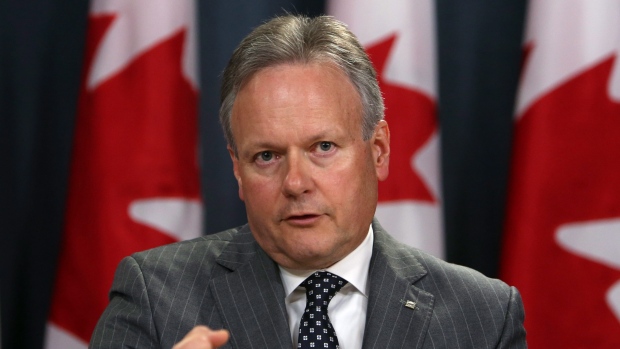Sep 11, 2017
Poloz is 'clearly willing to take risks': Rosenberg

One of the most influential voices on Bay Street is warning that even after raising its benchmark rate at two straight meetings, the Bank of Canada might not be done.
"I don't want to alarm anyone, but in the past, when constraints were binding this tight in both the labour and product markets at the same time, the overnight rate averaged out to be 4.25 per cent," Gluskin Sheff + Associates Chief Economist and Strategist David Rosenberg wrote in a report to clients Monday.
He was referring to the latest data pointing to Canada's economic hot streak. Namely, reports on Friday showing the country's unemployment rate dipped to 6.2 per cent in August, while the national industrial capacity utilization rate rose to 85 per cent in the second quarter.
Currency traders were caught by surprise last Wednesday when the Bank of Canada boosted its target for the overnight lending rate to one per cent and declared the country's suddenly-surging economic growth "is becoming more broadly-based and self-sustaining."
The Canadian dollar spiked above 82 cents U.S. in the immediate aftermath of the central bank's statement, and is still building on those gains, reaching 82.66 U.S. on Monday.
The bank's communication -- or lack thereof -- ahead of the decision has spurred some sharp criticism.
"On the Bank of Canada, many would be tempted to give them an F in this case," wrote BMO Capital Markets Chief Economist Doug Porter in a note to clients Friday.
"We think that harsh judgement is wrong — we would give them a zero. As in, there was no communication since the last meeting. Zilch. Zip. Nada. Nothing. As per Cool Hand Luke, what we had here was a failure to communicate — an epic fail."
Porter pointed out BMO has been urging a more hawkish approach from the central bank for a while, and so he has no problem with higher rates. But he noted the bank could take steps to "avoid intensifying the volatility" in currency markets.
And even after boosting its trend-setting interest rate at two consecutive meetings, the market thinks there's more in store from Governor Stephen Poloz.
Indeed, the implied probability of the Bank of Canada raising rates in December is 72.6 per cent, and the odds of the bank moving even sooner - in October - are 41.8 per cent.
Rosenberg pointed out on Monday there's plenty of precedent for the Bank of Canada to boost rates in back-to-back-to-back meetings, noting examples in 2010, 2005, 2002 and 1999.
"This is not a monetary authority that is adjusting policy by gazing through the rear-view mirror. It is clearly willing to take risks," he wrote about Poloz's Bank of Canada.
"Given the inherent lags between monetary policy and the real economy, I am sure that the central bank would respond that the risks run both ways, as in the risk of waiting too long in the face of reduced slack in the economy and red-hot growth of late."
